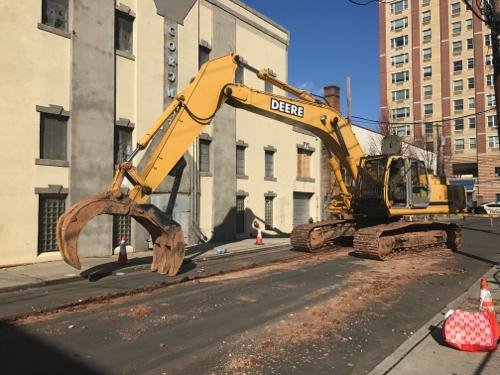The demolition process isn’t as carefree and effortless as it’s portrayed to be on TV shows. Most people don’t realize the extensive planning that goes into a demolition job. Properly surveying and preparing an area makes the difference between a safe project and one that puts people at risk.
A building owner may schedule demolition services if their property poses safety risks, contains hazardous materials, or they have plans to build a new structure.
You wouldn’t run a marathon without stretching your legs first—why would you demolish a building without preparing for the task ahead? Here’s how contractors find safety issues ahead of a demolition project:

Surveying
Before any work can begin, the demolition crew must carefully assess the area to identify any hazardous materials and structural weaknesses. Individual areas of the property are assessed for any dangers via building surveying and structural surveying.
When buildings are demolished, harmful materials may be disturbed. This causes dangerous fibers to become airborne. Examples of hazardous materials include asbestos, lead paint, polychlorinated biphenyls (PCBs), and a variety of synthetic mineral fibers.
For example, the surveyor may identify a popcorn ceiling that contains asbestos. They will make note of it, so that when the time comes to demolish the building, the crew will be aware of its presence. If they detect any flammable materials or toxic chemicals, these will also be noted in the report. The contractor can then create an appropriate plan for the safe removal of those hazards.
After the building materials are assessed, the next step is surveying the structure itself. Contractors consider factors like how much dust will be produced, noise levels, and the current condition of the building.
Due to the invasive nature of a survey (especially when material samples are required), this step should only be performed once the building owner is certain that they want to go ahead with the demolition.
Surveying is an essential step in any demolition process. Using the report that’s written from the survey, the demolition crew will be completely aware of any dangers.
The worst-case scenario is when these materials aren’t identified before demolition work is underway. Without surveying the building, workers may be exposed to harmful fibers, which can cause respiratory issues or lung cancer. A detailed investigation allows a crew to locate any areas that could pose a danger, and properly protect themselves.
Preparing
Once the survey process is complete and hazardous materials have been removed, the demolition crew can start preparing for the task ahead.
This process involves work like clearing trees from the property and grading the land. Contractors ask questions like:
- How will this project affect the surrounding buildings and the community as a whole?
- What sequence of steps will be followed to demolish the structure?
- How will construction debris be disposed of?
There’s no one-size-fits-all approach to demolition. Each structure will have specific issues and require a customized plan of action.
Based on this information, the contractors determine precisely how they’ll dismantle the structure and proceed with the demolition.
Surveying and preparing a property properly allows contractors to prevent injuries, reduce damage to surrounding areas, and decrease exposure to harmful materials.
Given all the unique issues that may arise during demolition, you need contractors with years of experience under their belt. Bella Contracting has offered building demolition services in New Jersey for more than two decades. We also offer demolition services in Bergen county. Give us a call to discuss the details of your next demolition project.



